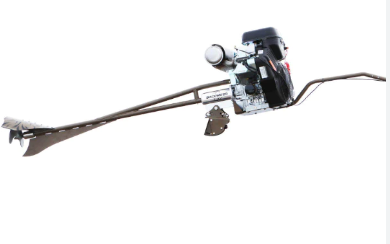- All
- Product Name
- Product Keyword
- Product Model
- Product Summary
- Product Description
- Multi Field Search
Views: 0 Author: Site Editor Publish Time: 2022-12-16 Origin: Site







The general mud motor structure includes a top joint, which connects the mud motor to the drill string; the power part, which consists of a rotor and a stator; the transmission part, which uses a constant velocity universal joint to transmit the eccentric power from the rotor to the drill bit as concentric power; the protection Bearing assemblies that protect the tool from bottom pressure and bottom pressure; and bottom subs that connect the mud motor to the drill bit.
When the drill bit bottoms out and the motor is working efficiently, the pressure in the fluid system can increase significantly.This is caused by a limitation inside the motor called "dropout". If this pressure differential is too high, the motor may stall, which means the bit has stopped turning, which can cause serious damage to the inner surface of the stator.Mud motors are described by their number of stages, lobe ratio, and outer diameter.The number of stages is the number of full twists of the stator from one end to the other, and the lobe ratio is the ratio of the number of lobes on the stator to the number of lobes on the rotor (the stator always has one more lobe than the rotor).A higher number of stages means The more powerful the motor. A higher number of lobes means higher torque output (for a given differential pressure) and a lower number of lobes means less torque is produced but the bit rotates faster.
Operating parameters include flow rate, bit speed and torque.The relationship between rotor and stator geometry determines speed and torque.Speed is directly proportional to flow, and torque is directly proportional to the pressure drop as the fluid flows through the motor.The more lobes, the higher the torque and the slower the revs.The use of mud motors depends largely on financial efficiency. In straight vertical holes, the mud motor may only be used to increase the rate of penetration (ROP), or to minimize erosion and wear on the drill string since the drill string does not need to turn as fast.The main purpose of the mud motor is to drill directional holes. While other methods can be used to guide the drill bit to the desired target area, they are more time consuming, adding to the cost of drilling. Mud motors can be configured to bend using different settings on the motor itself.A typical mud motor can be modified from 0 to 4 degrees, with about six increments of deviation per degree of flex. The amount of flex is determined by the rate of climb required to reach the target area. Using measurement-while-drilling (MWD) tools, directional drilling rigs can direct the drill bit to the desired target area.A steerable motor is used to drill tee spots. When drilling deviated points, it is important to avoid drilling soft formations directly below hard formations. In hard abrasive formations, high lateral forces at the well deviation can cause severe bit shank wear.Ideally, the tee point should be chosen in a non-abrasive uniform formation.

Extremely hard formations can be drilled with a motor using diamond or polycrystalline diamond compact (PDC) bits.
Due to the high rotational speed, high penetration rates can be achieved.
Drilling cycles will be allowed regardless of the horsepower or torque produced by the motor.
The PCPD stator is the main part of the pump and is usually lined with elastomer. Most PCPD pump failures are due to this elastomeric component. However, the operating conditions and environment should not degrade or cause mechanical failure of the elastomeric components during the service life of the equipment. Unfortunately, the industry does not have elastomers that can last longer, resist abrasive fluids and solids, and withstand deflections at operating temperatures.The most common elastomer grades used for this application are NBR (Nitrile Butadiene Rubber or Acrylonitrile Butadiene Rubber) grades, which have mediocre properties.There is definitely a need for better elastomeric compounds to reach areas currently inaccessible to PCPD and to increase the longevity of current products.
1.Bit speeds can be very high because such bit selection matters.High speeds may limit the use of certain types of bits.
2.Special pump requirements may be required as specific pressures and flows may be required to maintain correct and efficient motor operation.
3.If used for directional control, the downhole assembly may be long, which may take some time to assemble on the rig floor.
4. Mud motors may be sensitive to fouling agents.This means that certain types of drilling fluids or additives may damage the motor or reduce its performance. As mentioned above, one specific example is the use of oil-based mud with a mud motor. Over time, oil can degrade the elastomers and seals in the motor.